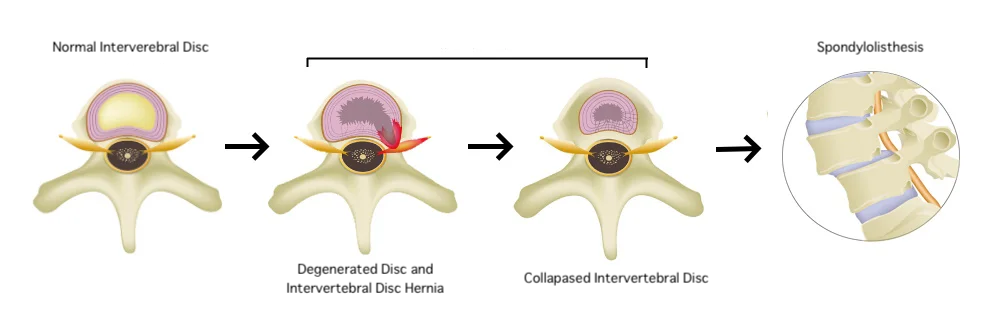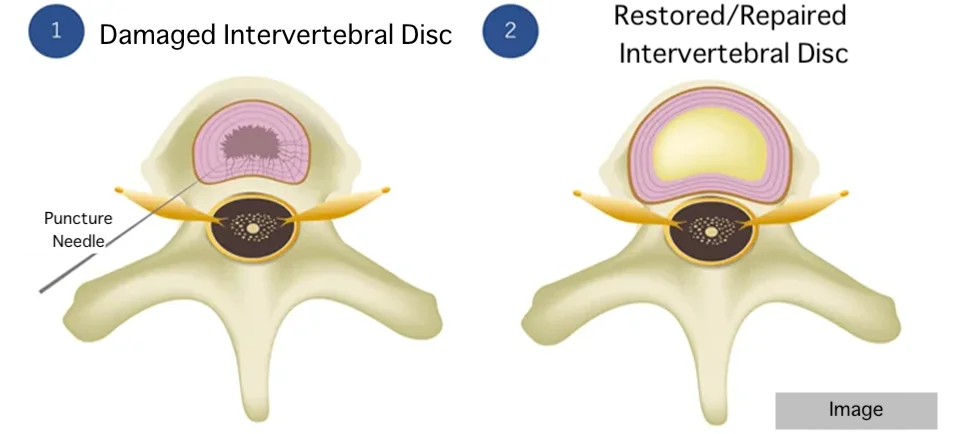Column What Causes Lumbar Spondylolisthesis? People Who Lead This Kind of Lifestyle Should Exercise Caution
December 1st, 2023
Sometimes, abnormalities in the intervertebral joints or intervertebral discs can cause the bones to slip out of alignment. This is known as spondylolisthesis.
Symptoms of lumbar spondylolisthesis
Mild cases of lumbar spondylolisthesis may be asymptomatic, and it is not uncommon to find that lumbar spondylolisthesis has progressed when symptoms first appear, and the patient is examined.
The main symptoms of lumbar spondylolisthesis are back pain, pain and numbness in the buttocks and lower extremities. The appearance of symptoms depends on the degree of instability of the slip, the degree of degeneration of the intervertebral or isolated area, and the location and degree of nerve compression.
Causes of spondylolisthesis
Lumbar spondylolisthesis can be divided into dysplastic spondylolisthesis, lumbar spondylolisthesis, and lumbar degenerative spondylolisthesis, and the causes of spondylolisthesis are different for each of these types.
Dysplastic spondylolisthesis
Aplastic spondylolisthesis is caused by problems in the development of the spine from birth, such as hypoplasia of the vertebrae, but the incidence is very rare.

Lumbar Spondylolisthesis
Lumbar spondylolisthesis is caused by the mechanical fragility of the lumbar spine due to separation and progressive degeneration of the lumbar spine over a long period of time.
During adolescence, when the bones are growing, continued sports that place a heavy burden on the lower back, such as athletics, gymnastics, and soccer, can cause stress on the intervertebral joints, resulting in fatigue fractures of the articular processes.
If these fatigue fractures do not heal sufficiently due to overlapping exercise, separation of the lumbar vertebrae occurs, and spondylolisthesis develops.
Spondylolisthesis is one of the most common reasons for back pain in teenagers.

Lumbar Degenerative spondylolisthesis
For a long time, the cause of lumbar degenerative spondylolisthesis remained unknown, but recent research indicates that intervertebral disc degeneration is a factor in causing spondylolisthesis. *1
*1: I. Akkawi, H. Zmerly. Degenerative Spondylolisthesis: A Narrative Review. Acta Biomedica, vol. 92, No.6, 2021.
With the stresses of daily life and aging, the intervertebral discs and other parts of the spine degenerate, and as the disc degeneration progresses, the intervertebral joints and vertebral bodies also degenerate, resulting in the lumbar spine shifting from its normal position. This is lumbar degenerative spondylolisthesis.

The degenerative process, which begins with disc degeneration, may also involve trauma to the lower back and genetic factors.
Treatment of spondylolisthesis
Once a diagnosis of spondylolisthesis is made, the first step is conservative treatment. If symptoms do not improve with conservative therapy and are prolonged, surgery is often suggested.
Conservative therapy
If symptoms are mild, conservative therapy is the first step.
In the case of conservative treatment, a corset is used to reduce the burden on the back muscles and reduce the burden on the nerves. Anti-inflammatory painkillers and blocked injections are also used to alleviate symptoms.
In addition, stretching and strength training around the lower back, especially the abdominal muscles, may be performed during rehabilitation.
Surgery
Surgery is suggested when symptoms do not improve with conservative treatment and are prolonged, or when pain and numbness worsen, and quality of life deteriorates.
The most common surgical procedures for spondylolisthesis are lumbar fusion and posterior lumbar decompression.
・Lumbar fusion
In fusion surgery, the part of the spine that is compressing the nerve is removed, and bone is transplanted to fix the spine.
Under general anesthesia, an approximately 4 to 5 cm incision is made in the back, the intervertebral joint on the symptomatic side is removed, the intervertebral disc is removed, the patient’s own bone or bone from a bone bank is grafted to the disc, and it is fixed using internal fixation materials (screws, rods, etc.) to the upper and lower vertebral bodies.
By fixing the slipped lumbar vertebrae, it is possible to stabilize the unstable spine and prevent further slippage.
・Posterior lumbar decompression
Posterior decompression surgery is performed under general anesthesia through an approximately 3 cm incision in the lumbar region to remove vertebral arches and widen the spinal canal, while confirming the results under a microscope.
It may be performed alone or in combination with a fusion procedure for spondylolisthesis.
In decompression surgery, the bone slips and the nerve is compressed. When combined with immobilization, it can also stabilize the spine.
Our Treatment – The Cellgel Method
As mentioned above, recent studies have shown that intervertebral disc degeneration is a factor that causes slippage.
Therefore, we believe that prevention of spondylolisthesis cannot be achieved without repairing the degenerated intervertebral discs. At our clinic, we perform the Cellgel method for slipped disc caused by disc degeneration.
With our Cellgel method, a drug is injected to fill the cracks in the disc, which becomes a gel and replaces the cracks, thus providing a fundamental treatment. It is characterized by the fact that the volume of the disc is not reduced, and the drug remains in the disc as a gel implant after treatment, thus preserving the disc.
Unlike conventional surgery, the Cellgel procedure does not involve incisions, so there are fewer postoperative risks.
The hospital stay is only half a day, and you can walk home on the same day of treatment.

If you are suffering from back pain or have been diagnosed with spondylolisthesis, please consider having a consultation at our clinic.



